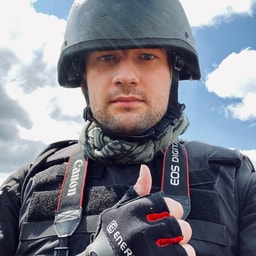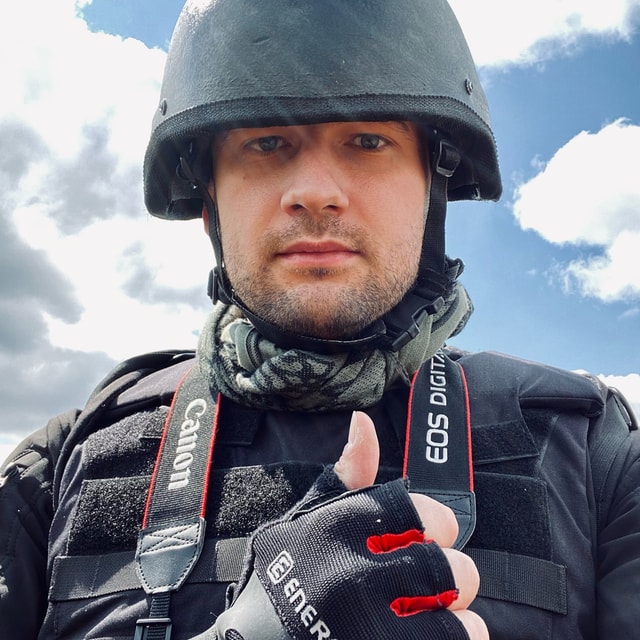Explainer: Why Russia wants autonomy for occupied Donbas (and why Ukraine doesn't)

Recent developments in the crisis surrounding Russia’s troop buildup on Ukraine's border have shed a light on what the Kremlin may hope to achieve by creating a global war scare and launching an intimidation campaign.
After a Dec. 7 video conference with U.S. President Joe Biden, Russian President Vladimir Putin again issued threats against NATO’s “military expansion near the Russian border,” referring to Ukraine’s efforts to join the Alliance.
The call took place after an earlier Dec. 2 meeting between the two countries' foreign ministers, Anthony Blinken and Sergey Lavrov, failed to defuse tensions that intensified after Russia amassed 100,000 troops on Ukraine's borders, leading Ukrainian and Western intelligence agencies to fear a Russian invasion in early 2022.
Following Putin’s remarks, press reports emerged that the U.S. allegedly started considering options to find a compromise and ease the crisis instigated by Russia.
On Dec. 9, the Associated Press cited anonymous White House officials who said that the Biden administration was considering putting pressure on Ukraine to formally cede some autonomy to the Russian-occupied, militant-run part of the Donbas, the industrial Eastern region at the epicenter of Russia’s undeclared seven-year war against Ukraine.
White House Press Secretary Jen Psaki called the allegation “absolutely false” later on Dec. 9. But notably, Psaki denied that the Biden administration was pressuring Ukraine to cede any territory to Russia – but not that Kyiv was being pressed into political concessions to occupied Donbas.
If the AP report turns out to be true, Biden may be about to ask Kyiv to make its most domestically unpopular and painful decision of the entire war, which has killed over 13,000 since 2014.
Where does the autonomy demand come from?
The demand for Donbas’ autonomy comes from two peace agreements signed in Minsk in September 2014 and in February 2015 following two major battles at Ilovaisk and Debaltseve, respectively.
Back then, Ukraine, Russia, and the Donbas militants, under OSCE mediation, signed what are now known as the Minsk accords, formally aimed at stopping the war and bringing about a peace settlement.
Since the documents were signed as a result of major Ukrainian battlefield defeats due to Russia’s military involvement, many provisions demanded significant concessions from Ukraine.
In particular, the Minsk accords envisaged that Ukraine passes a bill enshrining a “special status” for the occupied part of Donbas. This legal framework stipulates very broad autonomy, potentially even semi-independence, for the estranged region.
This special status would provide the Russian-occupied territories with a full amnesty for all combatants, as well as the right to use Russian as their official language, to appoint their own prosecutors and judges, and to develop their own political and economic ties with Russia.
Moreover, the agreement allows the occupied regions to form their own “people’s militia” (in reality, their own independent armed forces) while Ukraine was still supposed to ensure the social and economic development of Donbas.
Ukraine was to hold local elections monitored by the OSCE and was even required to enshrine the Donbas’ special status in its Constitution. Immediately following the elections, Ukraine was supposed to start reinstating full control of its border with Russia, through which Russia has been supplying troops, weapons, and hardware to Donbas.
Last but not least, the Minsk agreements stipulated that all foreign military formations and illegal paramilitaries must be withdrawn from eastern Ukraine.
Which territories does Russia occupy in Ukraine’s east?
Russia mostly occupies the eastern and southern parts of the Donetsk and Luhansk oblasts, respectively, including the cities of Donetsk and Luhansk, the region’s pre-war key economic centers.
The total area of the occupied Donbas territories is nearly 18,000 square kilometers. A 2016 United Nations report estimated their population at 2.7 million. According to the Ukrainian government, 1.6 million others had already been displaced by the conflict at that time.
Russia additionally occupies the southern Ukrainian peninsula of Crimea, an area of over 27,000 square kilometers.
What went wrong?
Right from the start, Ukraine has said that it is ready to implement the Minsk Accords for the sake of peace in Donbas.
Some of the agreement’s provisions have been met. Ukraine’s armed forces and the Russian-backed militants have mostly pulled back their heavy weapons, such as tanks and field guns over 100 millimeters in caliber, 15 kilometers away from the front line, although this provision is often violated in combat, mostly by the Russian-backed militants.
Every year, Ukraine also formally extends the bill on the temporary “special self-regulation status” for occupied Donbas as its first step towards the solution laid down in the agreement.
Nonetheless, over the past seven years the peace process has hardly moved, and the war-torn region is still divided by a frozen 420-kilometer front line.
The problem is that all the measures stipulated by the agreements can be implemented in many different ways.
Kyiv, knowing that the self-proclaimed “people’s republics” in Donbas survive on nothing but Russia’s economic and military support, demands that local elections be held in compliance with Ukrainian legislation, under OSCE standards and supervision, and only after all militant forces and paramilitaries are withdrawn and disbanded, and the national border is back under Ukrainian control.
Russia, meanwhile, did not rush to withdraw its formations and hardware from the Donbas.
Thus, the frozen conflict continued for years, with no resolution in sight, claiming nearly 100 Ukrainian lives every year in squalid trench warfare.
Starting from 2015, there have been multiple attempts to revitalize the Minsk agreement by approving an implementation plan which is suitable to all parties. The most famous one is the so-called “Steinmeier Formula” introduced by ex-Foreign Minister of Germany Frank-Walter Steinmeier.
The compromise suggested that Ukraine provide the occupied Donbas with a temporary special status, then hold an OSCE-monitored local election under Ukrainian legislation. If the OSCE recognizes the election results as fully legitimate, Ukraine would be obliged to give the territories a permanent special autonomous status — which includes the legalization of their “people’s militia” armed by Russia.
And just after this, Ukraine is supposed to get the state border with Russia under its control.
In September 2019 it became known that all involved parties, including Ukraine, signed up to the Steinmeier Formula as the principal way to get the Minsk agreements implemented.
Nonetheless, there has been no progress, since the Minsk implementation remains deeply unpopular among the Ukrainians.
The Steinmeier Formula’s approval immediately triggered huge street protests across the country in 2019.
Why isn’t Ukraine happy about this?
Giving the Russian-occupied Donbas a “special status” is seen by many Ukrainians to be a surrender to Russia. This is one of the most unpopular moves any government or presidential administration in Ukraine can make.
According to a February 2020 poll, 62% of Ukrainians oppose enshrining the Donbas’ autonomous status in the Constitution.
Many analysts in Ukraine and beyond strongly warn against giving in to this Russian demand. Many see it as an attempt to introduce a fully legalized, Russian-controlled Trojan horse into Ukraine that would continue draining the country’s economic resources and block the country’s path to NATO and the European Union.
Ukraine might face the presence of a de-facto independent region within its borders fully controlled by the Kremlin, with its armed forces and foreign policy agenda decided by Moscow.
In addition to this, Ukraine may well end up being legally obliged to assume liability for the region’s economic and social restoration following the war.
Many analysts predict this to be a potential trigger for a massive internal conflict within Ukraine, and possibly the country’s bloody dissolution, which plays into Putin’s hands.
Since 2015, Ukraine has had to perform a complex diplomatic balancing act to avoid being forced to implement the Kremlin’s version of the Minsk agreements — and possibly to avoid a deal between Moscow and the West over its head. But as a result of the growing fear of Russia’s further invasion, such a deal looks more likely than ever.










